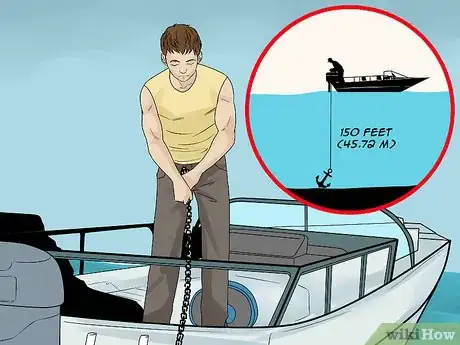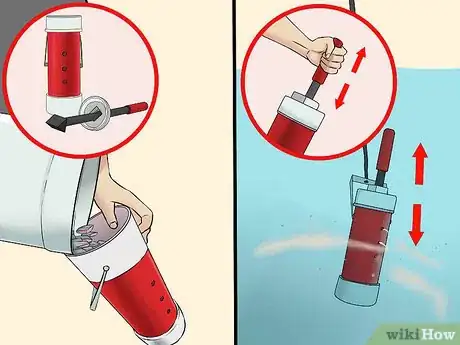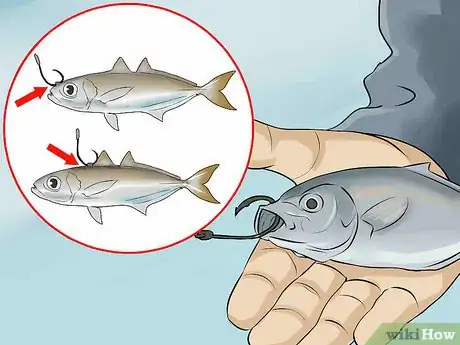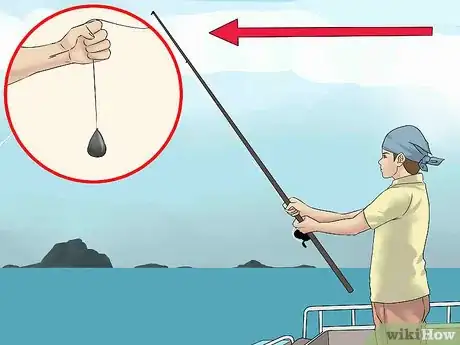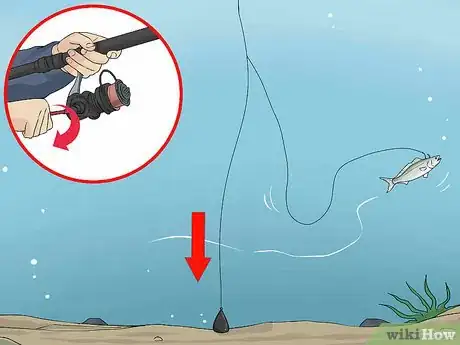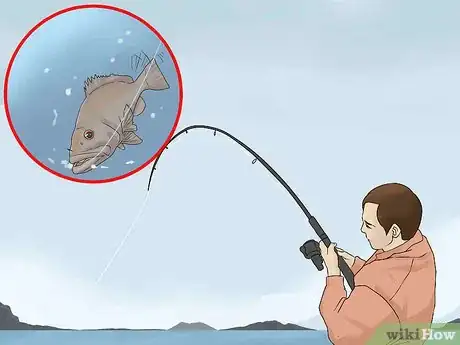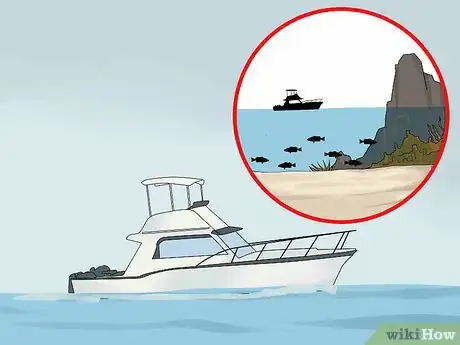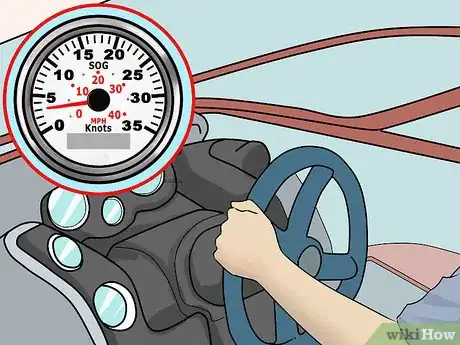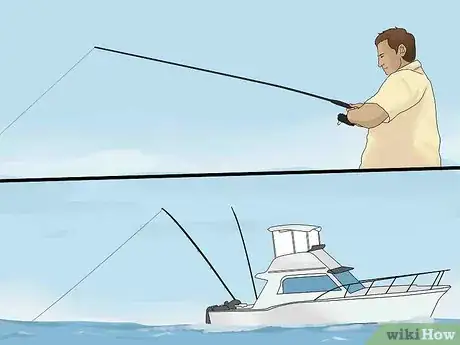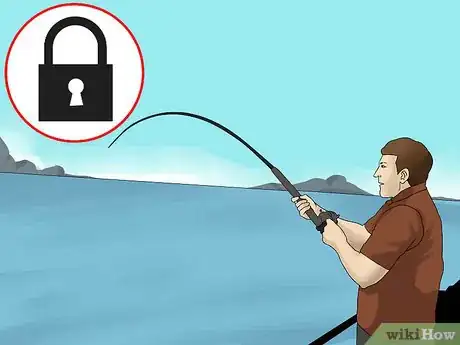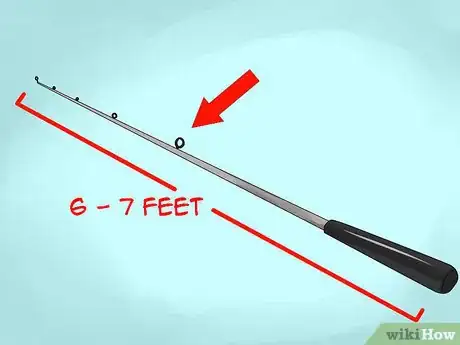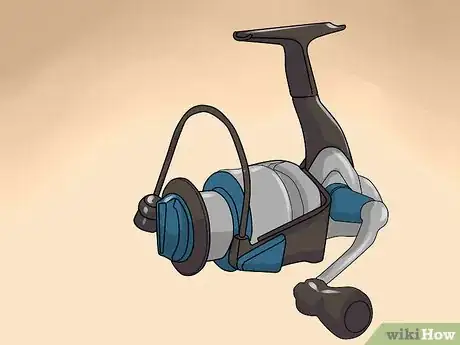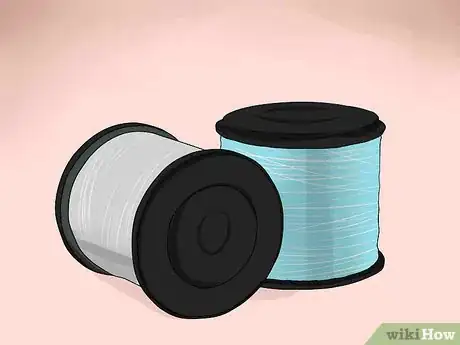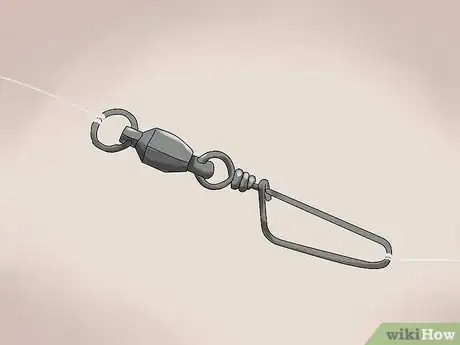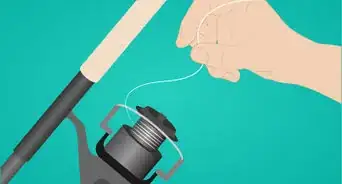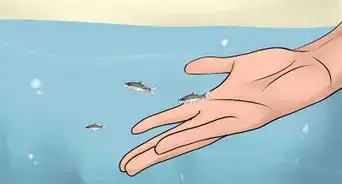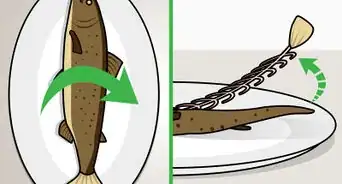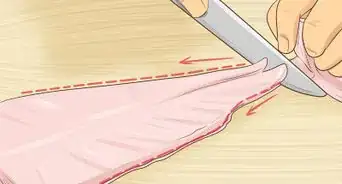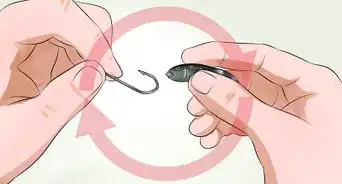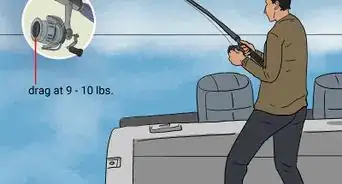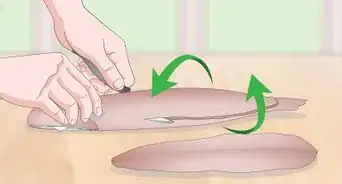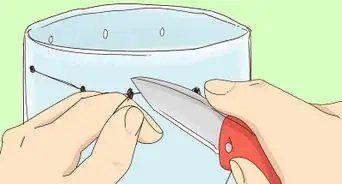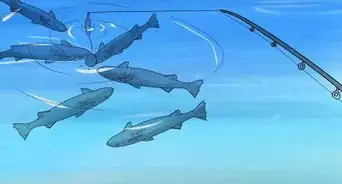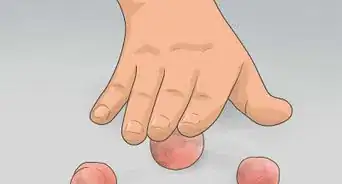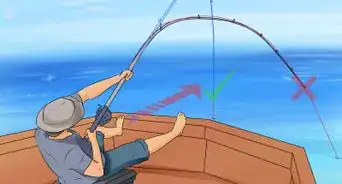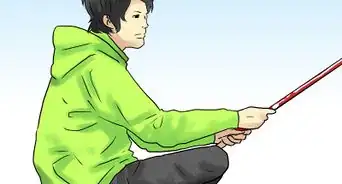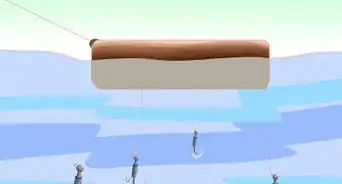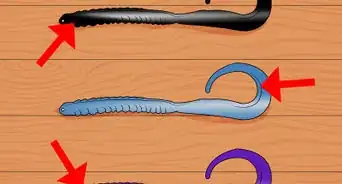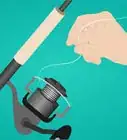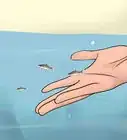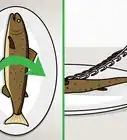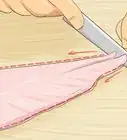This article was co-authored by wikiHow Staff. Our trained team of editors and researchers validate articles for accuracy and comprehensiveness. wikiHow's Content Management Team carefully monitors the work from our editorial staff to ensure that each article is backed by trusted research and meets our high quality standards.
There are 15 references cited in this article, which can be found at the bottom of the page.
This article has been viewed 65,128 times.
Learn more...
Grouper are one of the most sought after fish for anglers and can be found in tropical and subtropical waters around the world. Some of the most popular types of grouper are the Nassau grouper, the black grouper, the gag, the scamp, and the yellowmouth grouper.[1] Grouper come in many shapes and sizes and sometimes they can prove to be elusive. Luckily, if you get the right equipment and use the correct techniques, catching grouper can be fun and easy.
Steps
Fishing on the Bottom
-
1Drop your anchor slightly up-current. Bottom fishing requires you to go offshore with a boat. The deeper the water, the larger the grouper typically is. Locate an area where there are rocks, ledges, or other natural or man-made structures. To determine the current, drop a buoy and wait five minutes for your boat to drift. Then motor back to the buoy and drop anchor 150 feet up-current.
-
2Toss chum to the ocean floor. Dropping chum to the bottom of the ocean will attract grouper to the area.[4] You can purchase a grouper specific chum block at a fishing shop or you can create your own. To create your own chum, grind up fish bait and put it in a fine mesh bag.
- You can use Jack Mackerel, sardines, and some menhaden oil as the base for your chum.[5]
- Talk to the fishing shop owner about the most effective chum for grouper.
Advertisement -
3Attach live bait to your hook. Using live bait is a great way to get the attention of grouper swimming near the reef. You can attach your hook to your baitfish in a number of locations, including its nostrils, dorsal, or throat. Putting the hook through your baitfish's throat is the best method for bottom fishing.[6]
-
4Drop your line to the bottom of the ocean. A weight or sinker is required to drag your bait to the ocean floor where grouper usually congregate.[7] The movement of your live bait should attract grouper to the area. If you feel a slight tug on your line, it could be a bite or it could be your baitfish trying to make an escape.
- If you feel your baitfish trying to escape to the rocks or another structure, reel down and raise your rod so that you can keep your fish out of the rocks.[8]
- Check on your bait regularly to make sure that it hasn't fallen off the hook.
-
5Crank the reel so that your bait is suspended off the ocean floor. You do not want your weight to bounce off of the ocean floor. To avoid this, crank your reel a couple turns, and lift your rod to straighten out the leader. Then, slowly lower your pole so that the bait sits on the bottom.[9]
-
6Keep the line tight and reel in when the grouper bites. Waiting is an important part of fishing. Not all areas are going to be grouper heavy, and there's a chance other bottom dwelling fish are going to take your bait. When you feel a tug on your line, crank your reel hard, then raise your rod. Continue doing it in this pattern until you can reel in the grouper.
- The grouper tends to try to escape to its natural habitat and can tangle your fishing line.
- Lay your rod on the rail of the boat to help give you stability and power while reeling in the fish.
- If the fish has pulled your line to the reef or rocks, you can wait until it comes out of the reef and try to reel it in again.
- If you feel like the grouper has tangled the line on the reef or rocks, you should cut your line.
- To learn more about reeling in a larger grouper, read Reel-in-a-Large-Fish
Trolling for Grouper
-
1Find a grouper prone part of the ocean. Take your boat to areas that would be suitable for grouper, like near coral reefs or underwater cliffs. When you begin to troll, make sure you are doing so off the rocks or your line might get snagged. Aim for the sandy areas around the rocks or areas where you think grouper are swimming.
-
2
-
3Drop your bait into the ocean and count to ten.[15] Leave slack on the line when you are dropping your bait. As you begin to move your boat, the line will straighten out. Counting to ten will let the bait reach the bottom of the water. Your bait should be bumping on the bottom periodically, but not getting hung up on anything.
- You can use artificial or live bait while you troll.
- Check your line often if you are using bait to make sure that it hasn't become dislodged.
-
4Lock your reel and wait. Lock your reel and wait for a bite on your line. When you feel a bite, make sure to reel as hard as you can and raise your rod. You'll see the tip of your rod bend significantly when you've hooked a fish. Your rod should naturally bend by rubbing against the bottom of the ocean.
- The momentum of your boat will help you pull grouper out of rocks or reefs if it tries to escape.
Getting the Right Equipment
-
1Get a durable and heavy duty rod. Get a conventional rod, so that the line is on top and not below your rod. This will give you more cranking power and allow you to put more pressure on it. Your rod should be six to seven feet, and capable of carrying a 50-100 pound test line.[16]
-
2Get a spinning reel capable of holding a 50-100 pound test line. Grouper can get very large and weight a lot. Your reel will need a lot of cranking power so you can pull up the fish if it's a big. Depending on the waters you are fishing, getting a reel that can hold a 50-100 pound test line will ensure that your grouper won't break the line if you are bottom fishing or trolling.
- Getting a reel with a low-gear ratio will make it easier on you as you crank the wheel.[17]
-
3Use the right fishing line. Braided lines have a high breaking strength and minimal stretch. Less stress will allow you to feel bites easier. Monofilament lines are not suitable when fishing for deep water grouper because they stretch a lot.
-
4Use the right baits and lures. Live bait is one of the best things you can use to lure grouper to your hook. You can fish for smaller native fish in the area, or you can go to the store to get live bait or purchase artificial lures. Grouper have large mouths and will go for larger baits, so keep this in mind when fishing for them.
- Grunts, pinfish, sardines, blue runner, squirrelfish, and white mullet are the best baitfish for grouper.[20]
-
5Set up the proper rig. Your rig will change depending on the size of fish you are trying to hook as well as your personal preference. Typically, you will have a sinker connected to a swivel, which will then connect to the leader which connects to your hook. Circle hooks are preferable when fishing for grouper.[21] Make sure that your swivel is capable of handling a heavy load.
- 100lb ball bearing swivels are the best option when fishing for larger grouper.[22]
- To learn more about setting up a rig for fishing, read Rig-a-Fishing-Line
- Your leader should be at least four to six feet long.[23]
Community Q&A
-
QuestionDo Grouper eat plastic lures?
 Community AnswerYes, I have caught Grouper on small twitch baits and D.O.A Shrimp before. If you are truly trying to catch Grouper, the best baits to use would be frozen, live or fresh bait.
Community AnswerYes, I have caught Grouper on small twitch baits and D.O.A Shrimp before. If you are truly trying to catch Grouper, the best baits to use would be frozen, live or fresh bait.
References
- ↑ http://jrscience.wcp.muohio.edu/fieldcourses06/PapersMarineEcologyArticles/TheHabitatsBehaviorsandIm.html
- ↑ http://www.saltwatersportsman.com/techniques/bottom-fishing-southwest-florida
- ↑ http://www.oifc.com/bottom_fishing
- ↑ http://www.oifc.com/bottom_fishing
- ↑ http://www.theonlinefisherman.com/how-to/making-the-best-chum-how-to-use-it
- ↑ http://www.saltwatersportsman.com/how-to-hook-live-bait#page-4
- ↑ https://www.takemefishing.org/how-to-fish/fishing-with-live-bait/bottom-fishing/
- ↑ http://www.oifc.com/bottom_fishing
- ↑ http://www.oifc.com/bottom_fishing
- ↑ http://www.saltwatersportsman.com/best-fishing-cities#page-2
- ↑ http://www.sportfishingmag.com/trolling-with-lipped-plugs#page-5
- ↑ http://miamifishing.com/fishing-reports/5-surefire-summer-grouper-tactics
- ↑ https://www.igfa.org/About/Trolling-Speed-and-Bait-Position.aspx
- ↑ https://www.igfa.org/About/Trolling-Speed-and-Bait-Position.aspx
- ↑ https://www.youtube.com/watch?v=hm7ZpcYeJ2k
- ↑ http://www.theonlinefisherman.com/grouper/best-rods-reels-grouper
- ↑ http://www.theonlinefisherman.com/grouper
- ↑ http://www.floridasportsman.com/2008/11/01/_grouper_fishing_bottom_rigs_baits_by_the_pros/
- ↑ http://www.theonlinefisherman.com/grouper/best-line-leaders-grouper
- ↑ http://www.oifc.com/bottom_fishing
- ↑ http://www.floridasportsman.com/2008/11/01/_grouper_fishing_bottom_rigs_baits_by_the_pros/
- ↑ http://miamifishing.com/fishing-reports/5-surefire-summer-grouper-tactics
- ↑ http://www.theonlinefisherman.com/grouper/best-line-leaders-grouper
About This Article
If you want to catch grouper, try bottom fishing. Take your boat 30-85 miles offshore, then anchor your boat 150 feet up current from where you want to fish. Toss a block or bag of chum to the ocean floor and attach live bait to your hook. Drop the line straight down, then crank the reel so the bait is suspended off the ocean floor. When you feel a tug on your line, crank your reel hard, then raise your rod. Continue doing this until you can reel in the grouper. To learn about trolling for grouper, read on!
